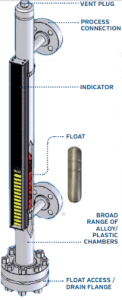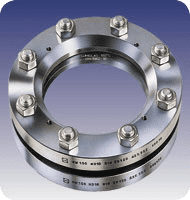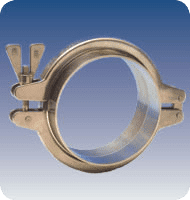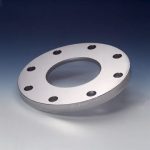Which to Choose—Stainless Steel or Single Use Technology (SUT)?
Posted on March 29, 2023 by Jeremy SheldonPresenting the pros and cons for biopharmaceutical processing
Single use technologies (SUTs) entered the biopharmaceutical industry in the 1990s, and processors were quick to take advantage of this alternative to traditional stainless-steel tanks /equipment for production lines. Single use production runs a process through equipment one-time using high-performance polymers for disposable components that have been sterilized using gamma irradiation. Over time, companies have sifted through the pros and cons of both types of technologies, SUTs and stainless steel, to determine the best options for business operations.
Considering the advantages of SUTs
When considering SUTs, one major advantage is the low initial capital expense compared to stainless steel. The initial cost of goods and lead times for a single use set up compares favorably to stainless steel. However, companies analyzing life cycle costs (LCC) often discover that while initial capital expenditures for SUTs might be lower than stainless steel, the costs over time to purchase the single use, disposable components add up and start eating into the return on investment.
Plant capacity, equipment depreciation, allocation and other fixed costs should be calculated into the equation to help estimate the life cycle cost. Each type of system will strongly influence the operation’s layouts, utility requirements, procurement schedules and even the HVAC design.
Other issues related to SUTs can include supply chain management difficulties in obtaining the disposable processing components, potential leaching and the environmental impact of single use components on landfills.
High temperature and pressure might dictate stainless steel tanks
While SUTs offer small batch flexibility, other processing specifications, such as high pressure or the ingredients being processed, call for stainless steel. In addition, stainless steel production tanks offer durability and a nonporous surface that enables CIP or SIP operations. There are instances when pressure, temperature, ingredient utilization or production goals might dictate stainless steel.
Typical large scale stainless bioreactors and fermenters used in biopharmaceutical processing can be customized to almost any size, while capacity for single use technology is often limited. Stainless steel tanks and technology have a proven track record in the industry. Stainless steel equipment offers long term durability and the ability to withstand many different chemical compositions. However, stainless steel occupies more space and requires a great initial capital outlay.
Flexibility compared to demand
Single Use allows companies to have flexibility with their current pipelines and make changes quickly. This is particularly useful for facilities that make substances for clinical trials or a company that makes a vast range of products in relatively small volumes. Normally, the SUTs can supply a batch range between 20L to 6000L.
One primary reason companies often rely on stainless is demand. When stainless steel processing tanks are planned into a dedicated manufacturing footprint, they supply the most efficient solution to producing large quantities of a product. Therefore, in this instance, the decision between SUT or stainless rests on a company’s business model. Business owners or operators should ask this question: Does it require the flexibility to produce small or clinical batches or a continuous, more efficient production stream to meet quantities sufficient for market demand? Stainless steel best serves large scale production runs, with a normal batch range up to 20,000L.
An overview of both technologies’ pros and cons
Single Use Technology
pros
- Speed of deployment
- Limited or no cleaning required
- Flexibility and changeover time
- Contamination is rare
- Reduced initial capital outlay and square footage requirements
- Less labor intensive
- More conducive to pilot production
Cons
- Capacity imitations (smaller batches)
- Supply chain issues linked to consumables
- Ongoing leachable studies on materials
- Limited suppliers and manufacturers
- Environmental impact of plastic waste
- Potential error susceptibility due to manual operations
- Outstanding questions related to newer technologies
- Lead times continue to lengthen
Stainless Steel Processing
Pros
- Large capacity production runs
- Greater control over process (observation and measurements)
- Able to withstand higher temperature and pressure requirements
- Well established supply chain
- Long term return on investment over lifespan
- Well established, proven technology
- Higher degree of process automation
- Installed equipment may be used for other technologies on site and shared between facilities
Cons
- Lack of flexibility due to locked footprint
- Large area required for production and equipment
- High utility/maintenance costs associated with CIP
- Environmental impact of CIP water, chemical and energy usage
- Contamination concerns
- Longer lead times for capital equipment
Additional points to consider
Another point to examine with SUTs is the limited number of suppliers and the corresponding lack of standardization and interchangeability of materials. This lack of standardization can lead to unplanned production snarls when components are unavailable due to difficulties with the supply chain. For example, custom bags used in single use systems have been reported to have lead times of up to six months or more, decreasing the flexibility and lengthening time to market for new product development. This strong dependency on delivery timelines means that companies that rely on SUTs need a well-established and reliable supply chain.
One issue described as “recurring” with SUTs is the risk of leakage that can destroy a production batch. Leaks have occurred from the disposable bags used in these processing systems due to loose connections, punctures that can occur during handling and/or installation, or improperly welded seams.
Leaching a detriment to SUT pharmaceutical processing
Leaching, or the process of extracting or dissolving substances from one material into another, can have serious consequences in the pharmaceutical industry. When the drug product or other substance leaches into the material of the SUT container, it can contaminate the drug product, compromising product quality and negatively affecting patient safety.
Other leachable substances can include both organic and inorganic compounds or impurities. Leached substances can also interfere with analytical testing, which makes it difficult to accurately measure the drug concentration or level of impurities.
SUTS, designed for single use, are not intended for reuse or multiple sterilization cycles. Subsequently, if these rules are not followed, the SUT may be more prone to leaching than traditional stainless-steel equipment.
In addition to leaching, other factors such as microbial contamination can also impact SUT performance in pharmaceutical processing. SUTs require careful evaluation based on material compatibility, manufacturing processes and quality control measures to protect against leaching or other potential contaminants.
Blended technologies best serve the future
Hybrid tanks offer a viable solution moving forward. Smaller mixing equipment that relies on single use technology can be installed upfront, while downstream processing would be handled in much larger stainless-steel tanks and equipment capable of the volume necessary to meet market demand and production goals.
Biopharmaceutical processing firms need to firmly establish business priorities and operational goals, then decide on the right blend of stainless steel and SUTs. This will ensure businesses can achieve the greatest degree of efficacy, and highest levels of flexibility with SUTs, while relying on stainless steel equipment for high volume, high throughput processes.
Quality built sight port observation windows, clamps, gaskets and lighting from LJ Star can increase the effectiveness of stainless-steel tanks and equipment and associated processes. Industries are expressing increased interest in hybrid tanks which…
Overall, sight glass observation ports from LJ Star play a valuable role streamlining mass production in stainless steel tanks. They contribute to the return on investment and help preserve profit margins by allowing process observation that avoids wasted batches while at the same time improving worker and plant safety.
When looking into process observation windows for stainless steel tanks used for biopharmaceutical processing, look to LJ Star, the experts in high temperature/high pressure processing applications.

About the Author: Jeremy Sheldon
Jeremy Sheldon is Director of Life Sciences for LJ Star, responsible for working with customers in the Life Science industry for North America. Jeremy works with customers to offer the latest in sterile/sanitary technologies. Jeremy’s background includes a variety of sales and sales management positions within the life science industry.Subscribe to our Blog
Categories
- Certifications
- Company
- In The News
- Industry Information
- METAGLAS® Sight Glasses
- PackExpo 2020
- Sanitary Clamps
- Sanitary Fittings
- Sight Flow Indicator Benefits
- Sight Glass Applications
- Sight Glass Construction
- Sight Glass Lighting
- Sight Glass Lights
- Sight Glass Process Vessel Camera
- Sight Glasses
- Trade Shows
- Webcast



